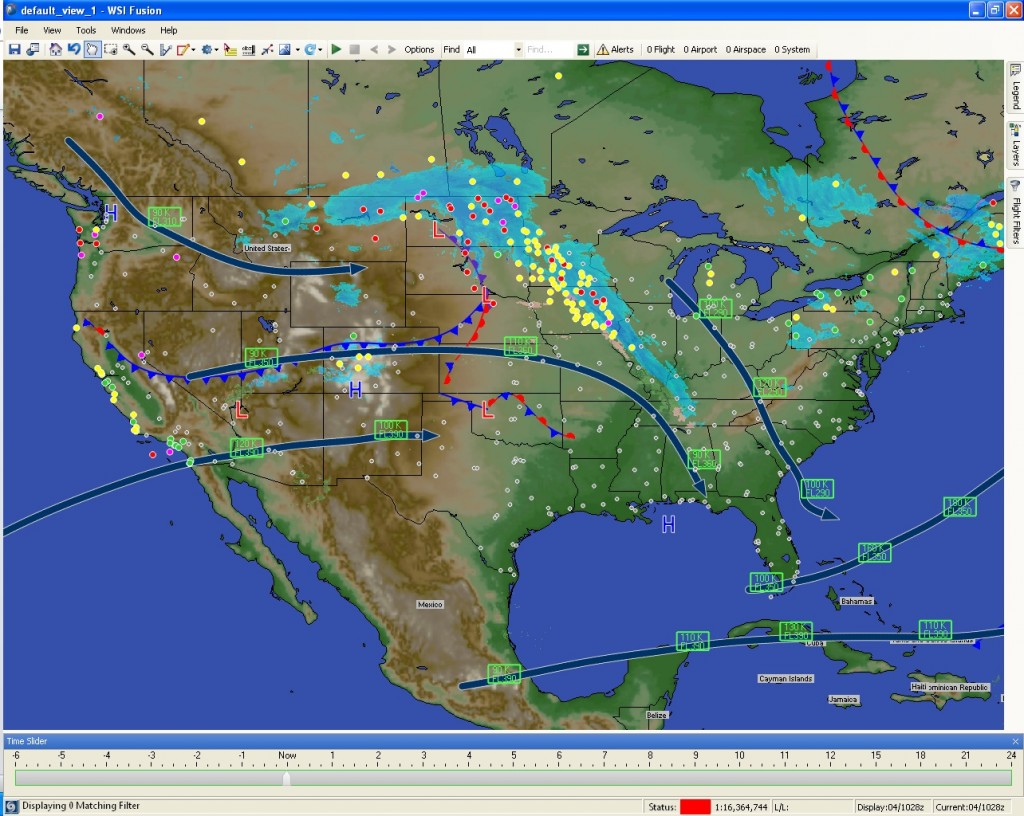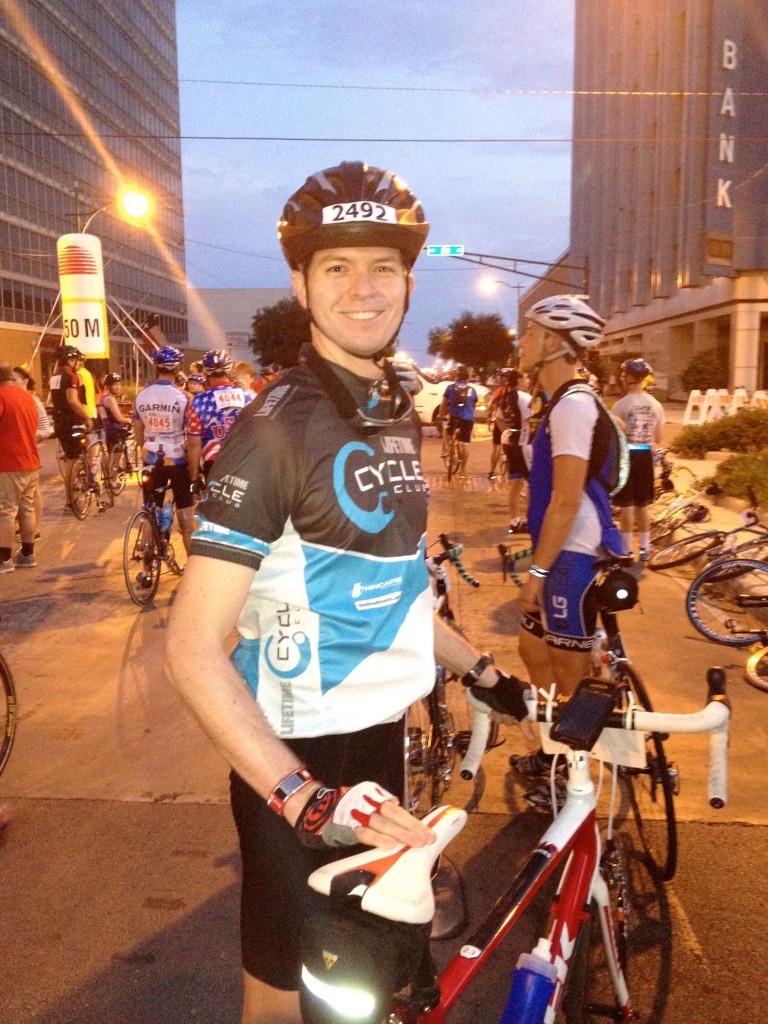Every year, the feds require me to spend some time in the cockpit to observe our pilots in their natural habitat. This time helps me better understand their activities, needs, and decisions at every stage of the flight from the pre-flight checklists to parking at the destination. I particularly enjoyed this year’s observation flights on Sunday. I started from Love Field and flew to Kansas City, Chicago, Branson, and then back to Love. Here are some of the best parts:
- Landing in Snowy Kansas City (MCI) – I was originally planning to go to Alabama and Florida hoping to see some thunderstorms near the airport, but the day before I saw that a winter storm was moving into the Midwest, so I switched up my route. Kansas City had the worst weather of my airports by far: visibility 3/4 mile, low clouds, strong north winds, light snow, and slippery runways. The pilots called the braking action fair on the runway, in the middle of our braking action scale, and poor on the taxiway, meaning it was slightly better than an ice skating rink. To ensure we didn’t slide off the taxiway, the captain taxied to the gate at less than 10 mph. Taxiing two miles at that speed felt like a lifetime, but it was a good call by the captain. Caution helps keep us off the news.
- Departing Snowy Kansas City – Before we could take off from Kansas City, I got to experience deicing from the cockpit for the first time. Even though the snow was blowing in sideways and seemed to be fairly dry, we still needed to spray a couple of different types of fluid onto the wings and tail to ensure that they didn’t have any snow adhering to them. Frozen precipitation on the wings and control surfaces reduces their effectiveness. Unfortunately, from the cockpit jumpseat (just in front of the cockpit door), I couldn’t see the actual deicing process, which would have been interesting. However, it was helpful to observe the deicing trucks moving to and from the aircraft and hear the communication between the captain and the “Iceman” who does the spraying.
- Crew Diversity – As you’ve probably noticed, the pilot profession in America is overwhelmingly white and male. I would estimate that perhaps 90 percent or more of our pilots fit that description. I have no problem with white males, but since half our general population is female and a significant portion is nonwhite, I’d like to see a little more diversity in the pilot profession. On this trip, I found some. The captain on the first two legs to KC and Chicago was female and in her 50s or early 60s with stark white hair. She probably started flying for us when I was in elementary school or maybe early junior high. She was extremely detail-oriented, very professional, and very comfortable in her role. The first officer was Latino. He performed an outstanding landing in KC on a slippery runway with visibility right at his minimums. On the way back to Dallas via Branson, the first officer was black. A former military pilot, he successfully landed in Branson in very strong and gusty winds that behaved oddly due to the numerous hills around. The only white male pilot was the captain on the return leg, who also did a fine job. I really enjoyed seeing such a diverse group of pilots on a single trip.
- Branson – We just started service to Branson, MO, earlier this month after converting the station from AirTran to SWA. It’s a tiny station for us with only four daily departures right now to Dallas Love, Chicago Midway, and Houston Hobby. The ground handlers seemed to be contractors rather than SWA employees since the station is so small. I was glad to have the opportunity to visit our newest station on this trip. Branson is a different animal. A tiny, privately owned airport built in 2009, it has three “gates” but no jetways. Instead, passengers board and deplane via mobile stands that have a switchback ramp to walk up and down. Normally, that would be fine, but when we arrived, the temperature was 32F with winds gusting over 30mph, so stepping off the plane was a RUDE awakening. The terminal itself is quaint, similar to a small Bass Pro Shop from the outside. They actually put a small Bass Pro inside the terminal. Apparently there’s a tasty BBQ restaurant inside, but I didn’t get more than a peek. The airport gets such little traffic that its taxiway doesn’t extend the full length of the runway, so planes actually taxi on the runway itself for much of the distance. We taxied east on the runway, pulled a 180, and departed to the west. Branson was a very interesting experience.
Here is a picture of the Branson terminal.
Since I’ll be doing international flights, I’ll need to do an international jumpseat ride every other year. So probably next March, I’ll be heading out to San Juan, Puerto Rico. Mrs. Box said she wants to accompany me on that one.





